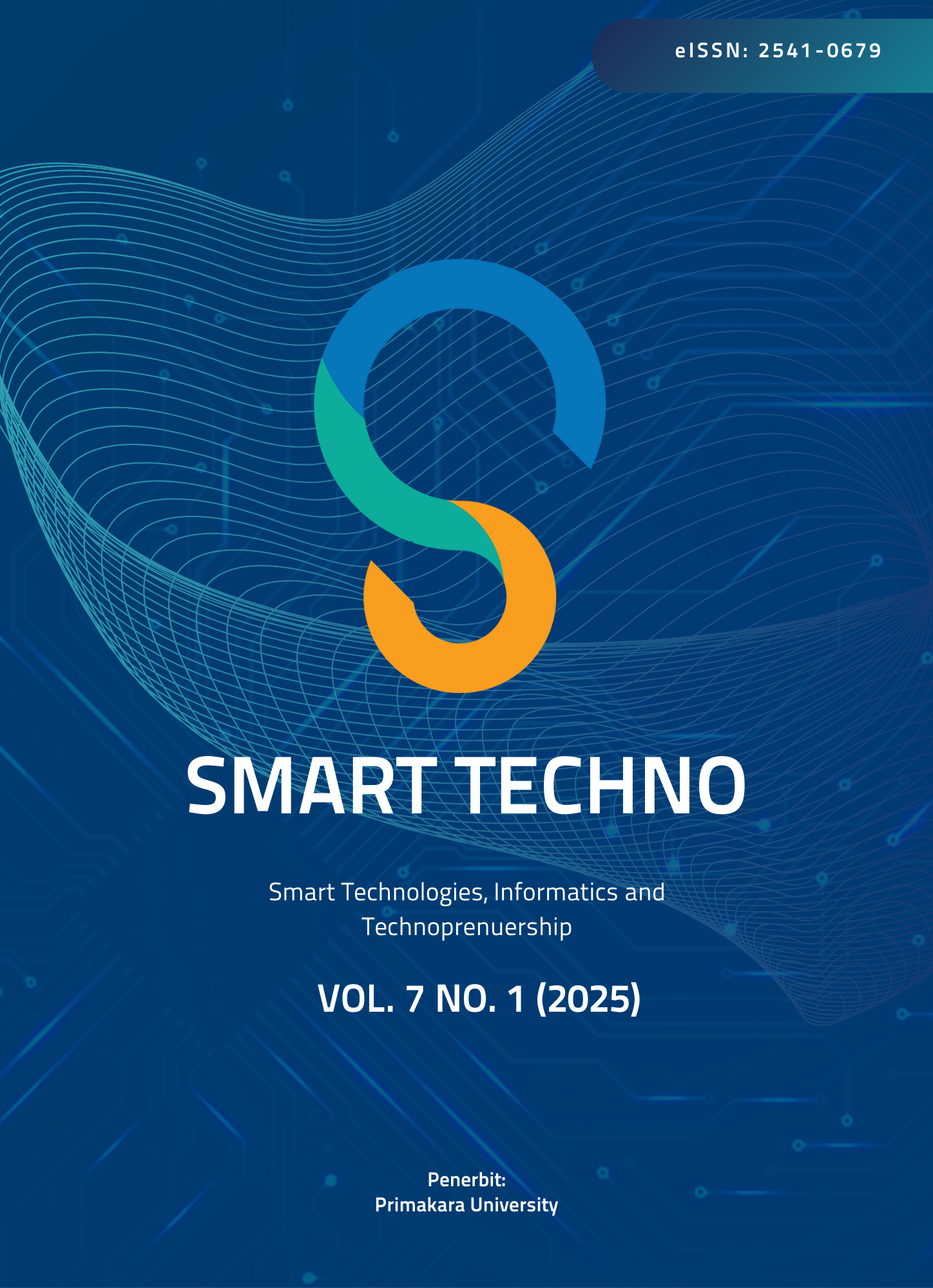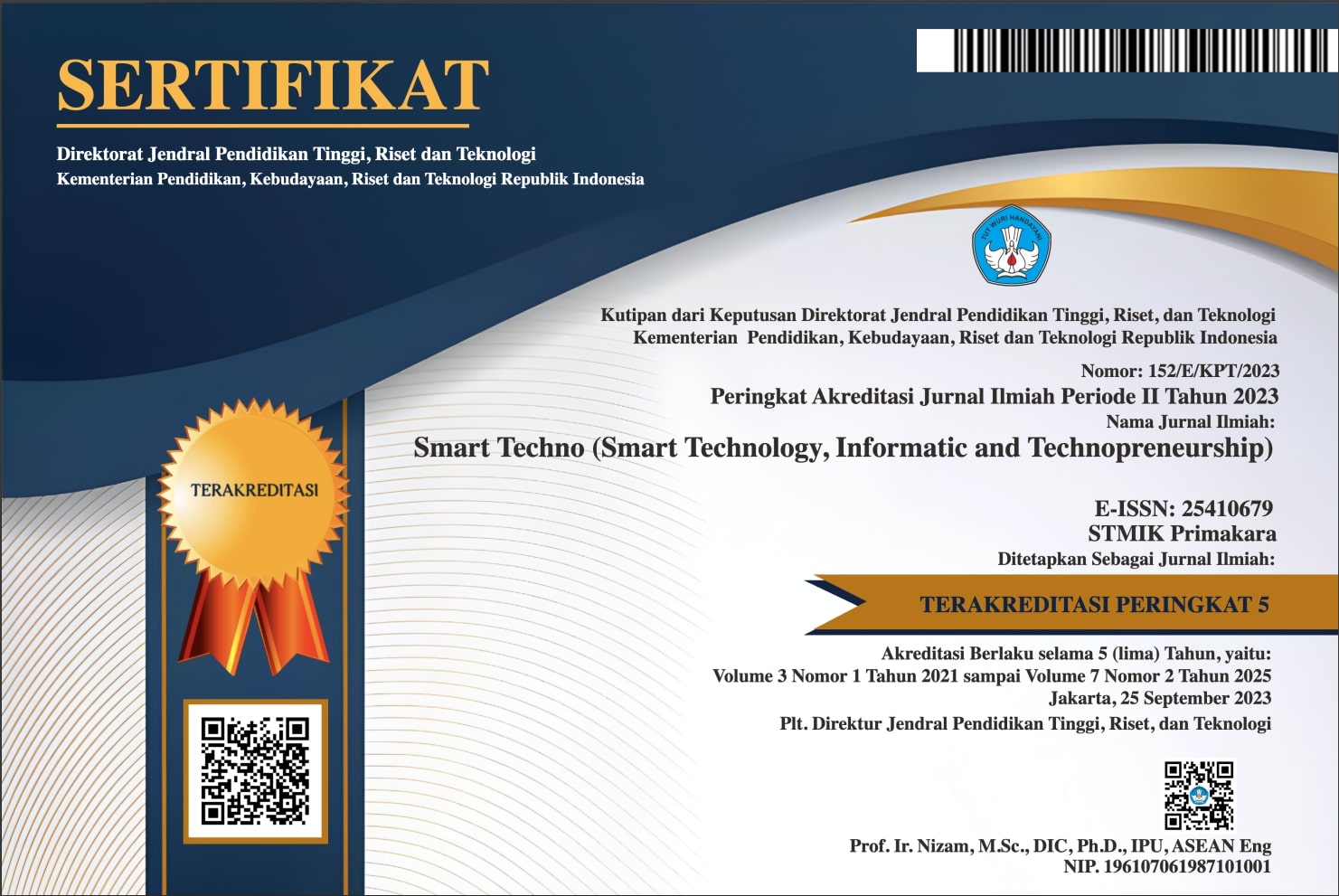Improving MRI Classification through Layered Convolutional Neural Networks Configuration
Abstract
Timely and accurate classification of brain tumors using Magnetic Resonance Imaging (MRI) is critical for effective treatment planning. This study proposes a layered Convolutional Neural Network (CNN) configuration to enhance the classification of brain tumors, addressing the limitations of traditional machine learning approaches that rely heavily on manual feature extraction. Utilizing a dataset sourced from Kaggle, comprising 7023 MRI images categorized into glioma, meningioma, no tumor, and pituitary tumor classes, the research implements data augmentation techniques such as rotation and flipping to increase the dataset size by 20%. Images were standardized to 128x128 pixels and normalized for model compatibility. The core model architecture was built using 2D CNNs with configurations ranging from one to three layers. The models were trained and tested using TensorFlow and Keras on Google Collaboratory, and evaluated based on accuracy, loss, and computational efficiency. The findings revealed that among all the configurations tested, the three-layered CNN model delivered the best performance. It achieved an accuracy value of 89.79% with a corresponding loss of 0.469. In terms of processing time, the model completed training in 59.8894 seconds and performed inference in 5.1099 seconds, highlighting its suitability for real-time diagnostic applications despite the longer training duration.
Downloads
References
Alomar, K., Aysel, H. I., & Cai, X. (2023). Data augmentation in classification and segmentation: A survey and new strategies. Journal of Imaging, 9(2), 46. https://doi.org/10.3390/jimaging9020046
Anaya-Isaza, A., Mera-Jiménez, L., Verdugo-Alejo, L., & Sarasti, L. (2023). Optimizing MRI-based brain tumor classification and detection using AI: A comparative analysis of neural networks, transfer learning, data augmentation, and the cross-transformer network. European Journal of Radiology Open, 10, 100484. https://doi.org/10.1016/j.ejro.2023.100484
Kaifi R. (2023). A Review of Recent Advances in Brain Tumor Diagnosis Based on AI-Based Classification. Diagnostics (Basel, Switzerland), 13(18), 3007. https://doi.org/10.3390/diagnostics13183007.
Lu, H., Wang, H., Zhang, Q., Yoon, S., & Won, D. (2019). A 3D Convolutional Neural Network for Volumetric Image Semantic Segmentation. Procedia Manufacturing, 39, 422-428.
Msoud Nickparvar. (2021). Brain Tumor MRI Dataset [Data set]. Kaggle. https://doi.org/10.34740/KAGGLE/DSV/2645886
Pallavi, G., & Vidhya, K. (2024). Brain tumor detection with high accuracy using random forest and comparing with thresholding method. AIP Conference Proceedings, 2853(1), 020079.
Priya, A., & Vasudevan, V. (2024). Brain tumor classification and detection via hybrid AlexNet-GRU based on deep learning. Biomedical Signal Processing and Control, 89, 105716.
Saeedi, S., Rezayi, S., Keshavarz, H., & others. (2023). MRI-based brain tumor detection using convolutional deep learning methods and chosen machine learning techniques. BMC Medical Informatics and Decision Making, 23, 16. https://doi.org/10.1186/s12911-023-02114-6
Shimanto, S., Hosain, M., Biswas, S., & Islam, M. (2023). Brain Tumor Detection and Classification by SVM Algorithm and Performance Analysis Through CNN Approach. In 2023 International Conference on Electrical, Computer and Communication Engineering (ECCE) (pp. 1-6).
Yin, Z., Lu, X., Cohen Cohen, S., Sui, Y., Manduca, A., Van Gompel, J. J., Ehman, R. L., & Huston, J., 3rd (2021). A new method for quantification and 3D visualization of brain tumor adhesion using slip interface imaging in patients with meningiomas. European radiology, 31(8), 5554–5564. https://doi.org/10.1007/s00330-021-07918-6
Copyright (c) 2025 Paul Michael Custodio

This work is licensed under a Creative Commons Attribution 4.0 International License.
Authors who publish with the Smart Techno agree to the following terms:
- Authors retain copyright and grant the journal the right of first publication with the work simultaneously licensed under a Creative Commons Attribution License (CC BY-SA 4.0) that allows others to share the work with an acknowledgment of the work's authorship and initial publication in this journal.
- Authors are able to enter into separate, additional contractual arrangements for the non-exclusive distribution of the journal's published version of the work (e.g., post it to an institutional repository or publish it in a book), with an acknowledgment of its initial publication in this journal.
- Authors are permitted and encouraged to post their work online (e.g., in institutional repositories or on their website) prior to and during the submission process, as it can lead to productive exchanges, as well as earlier and greater citation of published work. (See The Effect of Open Access)







